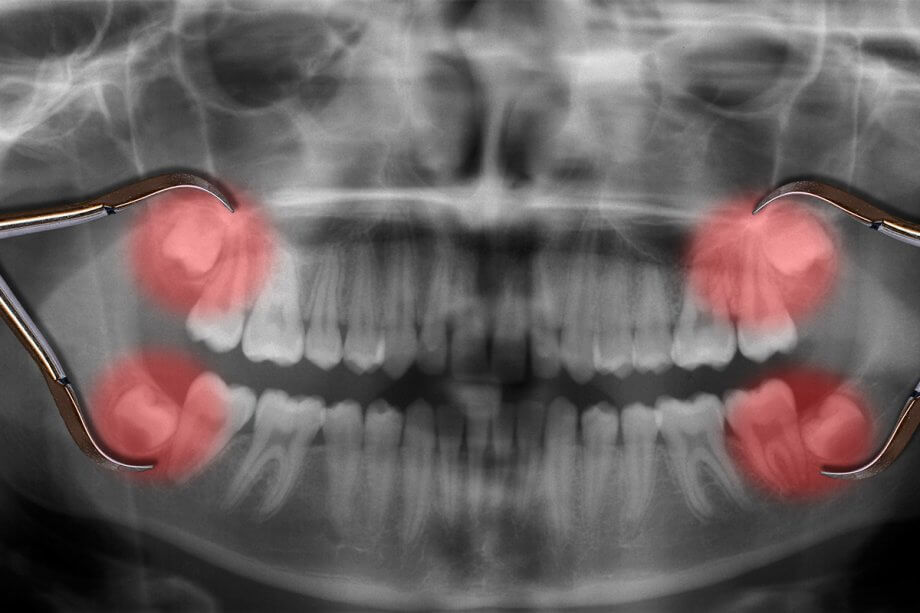The eruption of wisdom teeth is a rite of passage for young adults. In many cases, wisdom teeth (also known as third molars) are able to fully erupt without causing any issues. Other times, they become trapped beneath the jaw, or impacted. Here’s what you need to know about impacted wisdom teeth.
Understanding Impacted Wisdom Teeth
Impacted wisdom teeth can be either fully impacted or partially impacted. A fully impacted wisdom tooth is angled in such a way that it is completely trapped below the gumline. Partially impacted wisdom teeth erupt partially through the gums, while a portion of the tooth remains trapped in the jaw.
A wisdom tooth is typically impacted because there isn’t enough room for it to erupt or because it grows in at an angle. Some scientists believe that wisdom teeth are meant to erupt in the late teens to replace molars worn down by primitive diets; because our diets have since changed, we don’t lose teeth to wear and tear like our ancestors did, and we no longer have adequate space to accommodate wisdom teeth.
Symptoms of Impacted Wisdom Teeth
Although some people don’t experience any symptoms, most people experience some degree of discomfort with impacted wisdom teeth. When a tooth is partially impacted, it can be difficult to brush and floss properly, which leads to food being trapped in the gum tissue surrounding the tooth. This may cause infection, and symptoms like:
- Pain and swelling around the affected tooth
- Jaw pain
- Swollen, red, or bleeding gums
- Foul odor and unpleasant taste coming from the tooth
- Difficulty opening the mouth
An infected wisdom tooth is a dental emergency and should be treated promptly.
Treating Impacted Wisdom Teeth
When other teeth are impacted, we perform surgery to expose them and, with the help of orthodontics, encourage them to erupt into their natural positions. With wisdom teeth, we simply remove the teeth because there isn’t enough room for them in the jaw.
While a partially impacted wisdom tooth is easy to identify upon visual examination, a fully impacted tooth must be diagnosed with a dental x-ray. If a wisdom tooth is fully impacted and causing no symptoms, you may choose to have it extracted or monitor it closely.
Extracting impacted teeth is more complicated than extracting wisdom teeth that have fully erupted. A small incision must be made in the gum tissue adjacent to the tooth so we can access the area of the jawbone where it is trapped. The tooth may need to be removed in pieces, in some cases. Many patients with impacted wisdom teeth choose IV sedation, which allows them to feel as if they’ve slept through their surgery.
Learn More About Impacted Wisdom Teeth
If you’d like to learn more about impacted wisdom teeth and extractions, contact us today to schedule an appointment for a consultation with one of our doctors.

